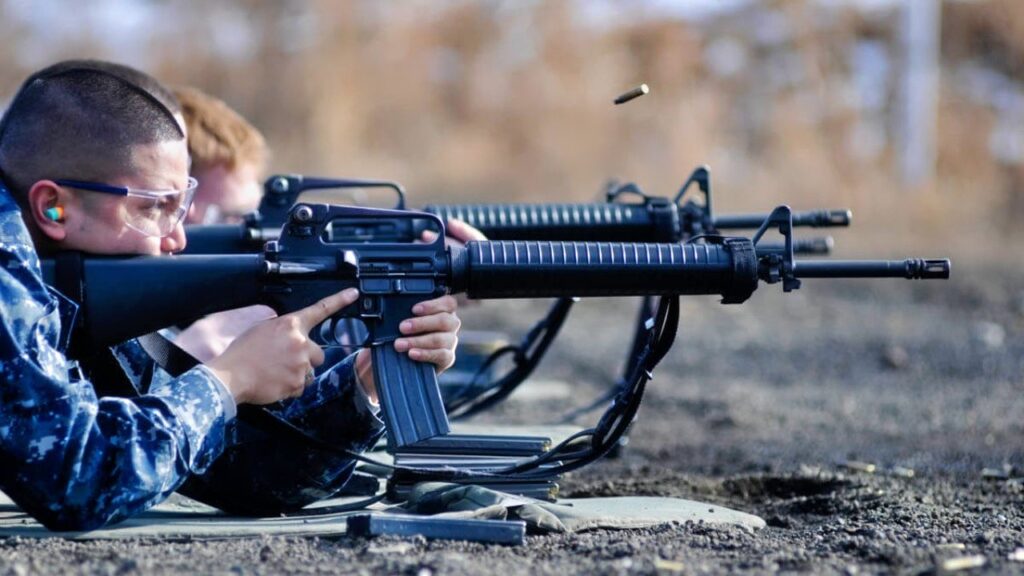Summary & Key Points: The British Army has completed trials of next-generation body-worn technology aimed at improving the survivability and situational awareness of soldiers on the frontline. The new equipment includes a laser detection system to warn soldiers if they are targeted, a drone heat-seeking system to identify enemy threats, and ground sensors to detect approaching enemies.
– Additional technologies tested included a helmet-mounted strobe warning system, advanced digital day-night optics for the weapon, a mesh network to extend the radio range, and a smart hub for integrated power and data supply.
– These advances have been developed in collaboration with the Defence Science and Technology Laboratory (Dstl) and industry partners and are intended to provide the UK Armed Forces with superior operational capability and battlefield awareness.
Revolutionizing how soldiers are equipped: New UK body-worn technology meets the challenges of the modern battlefield
The British Army is planning new body worn kit for soldiers equipped with impressive new technology.
The new equipment is designed to address the new realities of the modern battlefield and counter things like drones and laser detectors.
Next-generation body kit
The British Army has just completed a series of trials testing next-generation body-worn technology for frontline troops, with the overall goal of improving soldiers’ situational awareness and decision-making capabilities, thereby increasing their chances of survival.
Among the technologies that were tested and may be deployed in the future are laser detection systems that can alert troops if the enemy has located them, drone heat detection systems that can identify enemy soldiers and weapons systems in the area, and ground sensors that can detect approaching enemies and warn friendly soldiers.
“The Government is clear that it is committed to advancing technology that keeps the UK Armed Forces safe and advantageous. This cutting-edge technology will enhance operational lethality and increase battlefield awareness. I welcome the continued collaboration between Government, industry and scientists on this innovative programme,” said Minister for Defence Procurement and Industry Maria Eagle.
Other technologies include helmet-mounted strobe warning systems to distinguish friend from foe, advanced digital day and night optics for weapons, mesh networks that connect a unit’s radios with others nearby to increase range, and smart hubs that act as a unified power and data supply “brain” for all digital devices.
The tests were carried out by troops from 2nd Battalion, The Royal Anglian Regiment and scientists from the Defence Science and Technology Laboratory (Dstl).
“This technology will improve operational capabilities and protect the lives of our troops by providing an advantage over our adversaries,” Dstl senior principal scientist John Russell said of the next-generation system.
“It’s exciting to see the Future Joint Dismounted Soldier Vision clearly demonstrate a soldier system with multiple knowledge capabilities designed to combine critical data to increase operational advantage,” Russell added.
“Our goal is to fuse different technologies to enhance battlefield awareness and develop the most capable military in the world,” he concluded.
The fighting in Ukraine shows that militaries must evolve when facing superior adversaries. Drones, electronic warfare, and guided artillery have become mainstream in the fighting there, and soldiers need the right countermeasures and defensive measures against these new threats.
“This testing, led by Dstl, was a showcase of future technology and digital integration. Research is now moving forward, with industry coming together to enhance the capabilities of command, control, communications, computing and information systems,” Regimental Sergeant Major of the Infantry Test and Development Command said of the new equipment.
“As the Army’s dismounted close combat testing and development leader, we are at the forefront of advancing operational superiority and look forward to supporting future developments,” he added.
The U.S. military is working on a similar project to modernize its infantry base equipment to enable soldiers to operate more effectively on the modern battlefield.
About the Author
Stavros Atramazoglou is a veteran defense journalist specializing in special operations and a Greek Army veteran (national service with the 575th Marine Battalion and Headquarters Army). He holds a BA from Johns Hopkins University and an MA from the Johns Hopkins School of Advanced International Studies (SAIS). His work has been featured in Business Insider, Sandboxx, and SOFREP.

